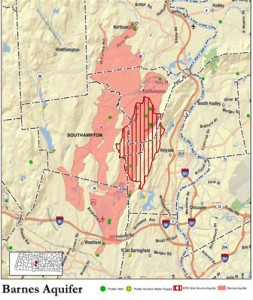WESTFIELD—The issue of crumb rubber and water contamination within the city council’s natural resources committee thus far has been focused on gathering facts.
The natural resources committee met last night, and for the second time in as many meetings the topic of crumb rubber and water contamination seemed to dominate the discussions. However, the committee made three motions on the night, each requesting more information before decisions could be made regarding the two topics and with a focus on possibly suggesting zoning ordinance changes.
The first topic for the committee was from a discussion around suggestions that are going to be made by the Barnes Aquifer Protective Advisory Committee (BAPAC) regarding Barnes aquifer protection, the protection of which encapsulated two of the three topics on the agenda.
These suggestions were discussed, in tentative form, at BAPAC’s most recent meeting, and included information that was given out in a drafted letter to the Westfield City Council by BAPAC. The draft was discussed by natural resources committee member and ward one councilor Mary Ann Babinski.
The topic that was most discussed during these discussions was the potential for changing zoning ordinances around the water resources protection district and the amount of impervious land—land that doesn’t allow fluid through—that is allowed.
According to Babinski, the current language allows for up to 70 percent of impervious land in the water resources district but she would prefer it be lower. This is according to Zoning Ordinance Article III, Sect. 3-170.8, Dimensional and Coverage Requirements.
“I want to suggest 50 percent impervious ground,” she said. “Seventy percent is definitely too high.”
Fellow committee member and ward four councilor Mary O’Connell said though, that there has to be understanding of why certain standards exist in Westfield in the first place.
“I’m not defending the ordinance in any way, but Westfield is more of an industrial town,” she said.
Babinski said that BAPAC still feels that the amount of impervious ground that is allowed is too high, and added that the more impervious ground there is, the more run off from stormwater, which she said results in more pollution and contamination. The committee also discussed the amount of impervious ground that is at Barnes Regional Airport, which also lies over the Barnes aquifer.
The committee, with that in mind, decided to request an update from the Airport Commission of current controls and oversight procedures ensuring aquifer protection as a motion, and determined to leave the topic in committee, to be discussed at a later date.
Another topic that was discussed was the matter of crumb rubber, particularly its use at Roots Athletic Center and in the water resource protection district. The crumb rubber is being used underneath the artificial turf at the athletic center where soccer games are being played, both indoors and outdoors, and some residents have voiced concerns about the potential health effects the crumb rubber may have on the players and on the water supply.
The committee raised questions about whether or not the chemicals that make up the crumb rubber would be against the zoning ordinance for the water resource protection district. According to Westfield Residents Advocating for Themselves (WRAFT) member Kristen Mello, she received a safety data sheet from Crumb Rubber Manufacturers of the crumb rubber she alleged was being used, and found that “The sum of components ‘which are classified as health hazards’ is 61 percent” of the crumb rubber.
According to the sheet, though—which was shared with The Westfield News—the product’s hazard level is “generally thought to be a nuisance dust.”
First aid requirements for exposure, according to the sheet, said to remove those with high inhalation exposures to fine fibers of the product from the area, while skin and contact exposure should be treated by washing the area with soap and water and eye exposure to be washed with water. Ingestion was considered unlikely in the sheet as well, with a comment on the sheet that the “product is inert and does not pose an ingestion hazard.” Additional warnings included potential for itching and a possible aggravation of allergies.
This left 39 percent of the product—by weight, according to an email Mello sent—that was not given a make-up of.
The committee voted to keep the item within their committee, in order to gather more information on the topic, as well as go through the information that is currently on file. They also requested an “update from the director of health and board of health regarding the crumb rubber material currently being used in the water resource district,” according to O’Connell.



